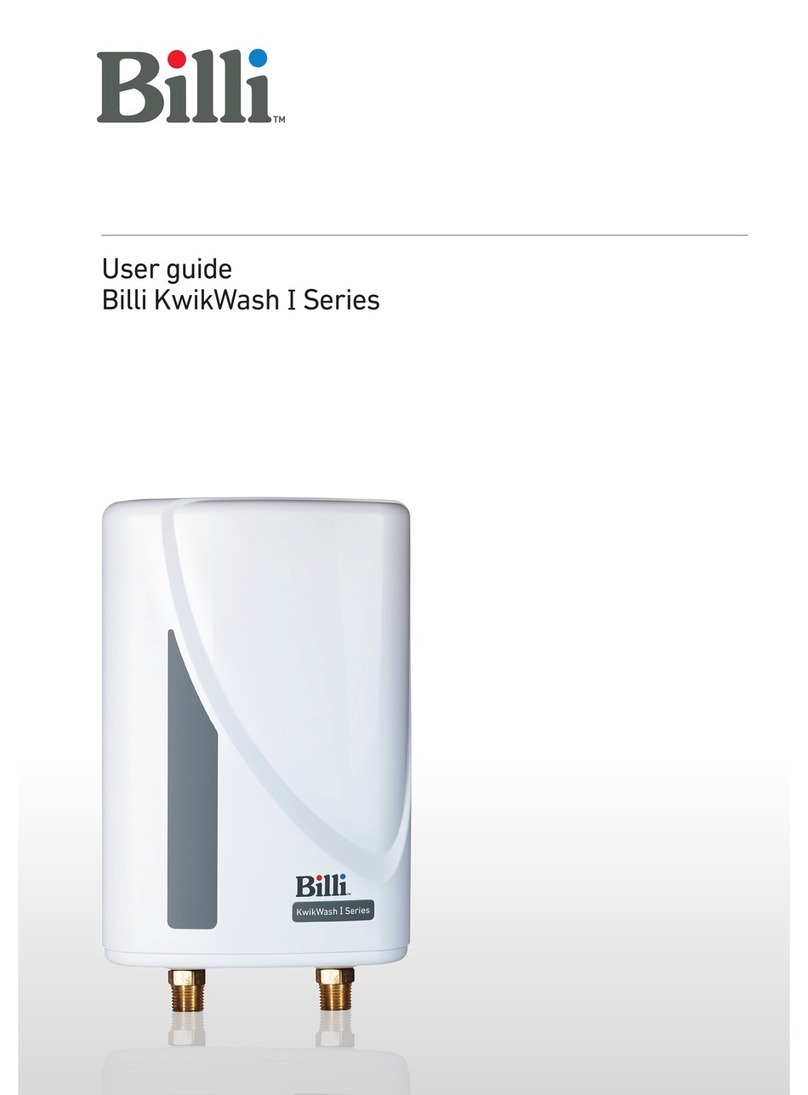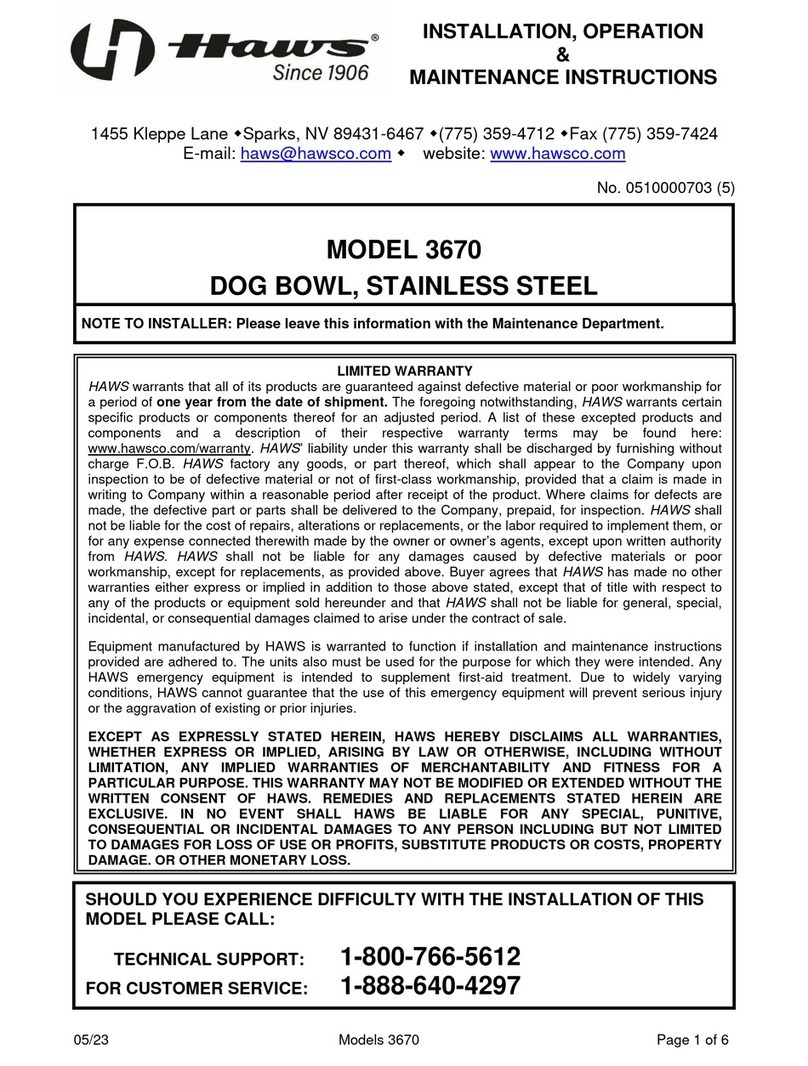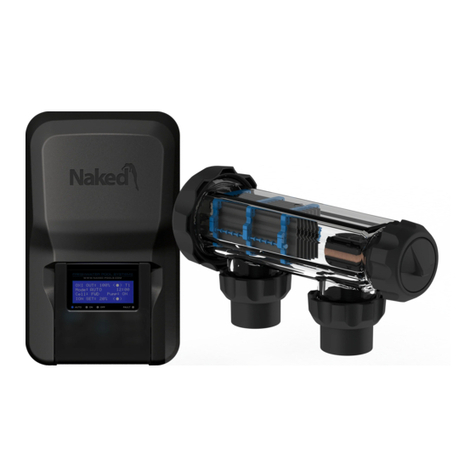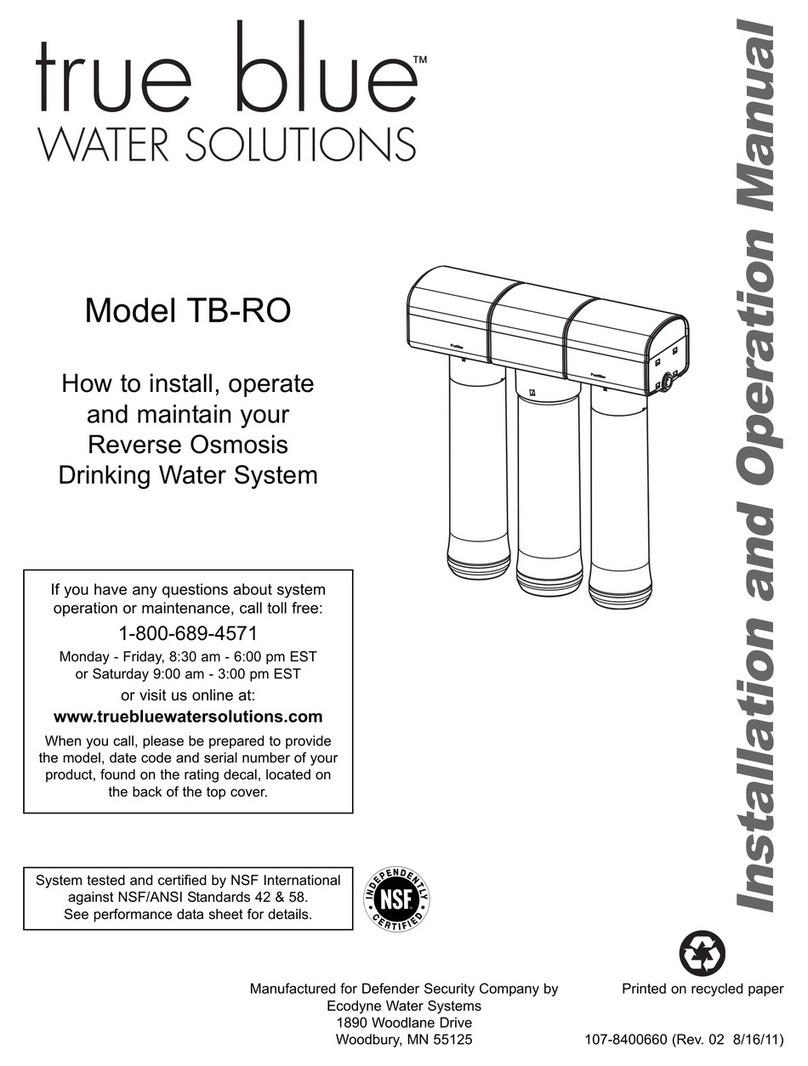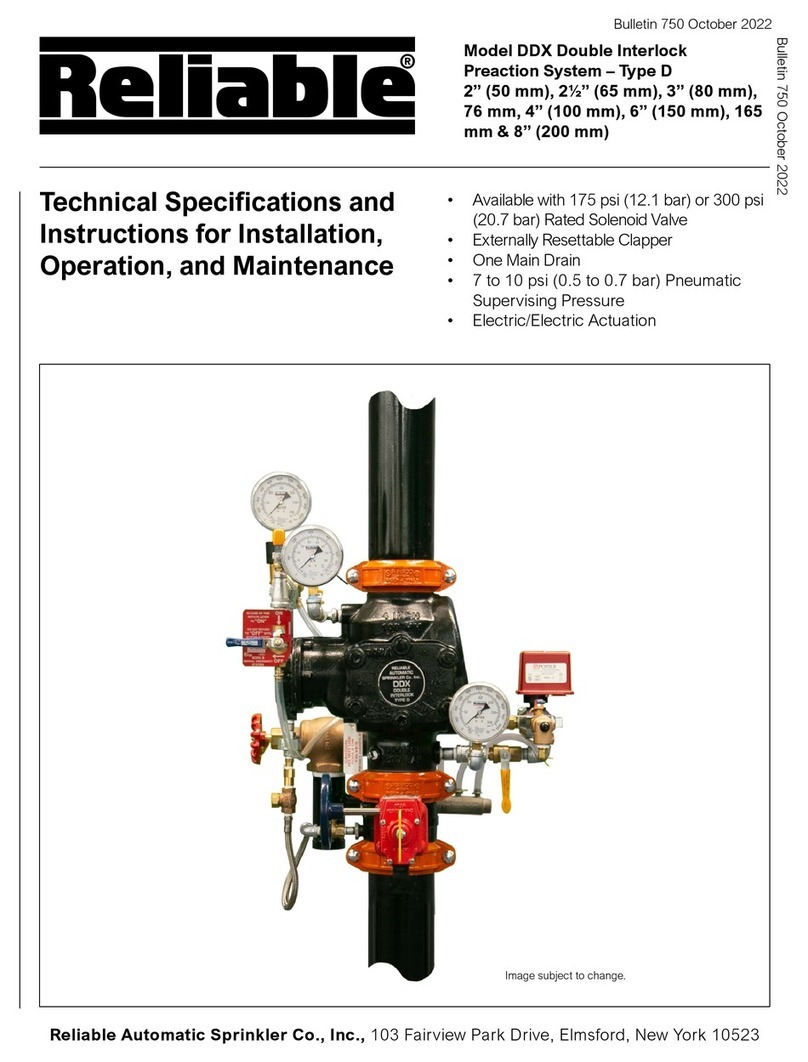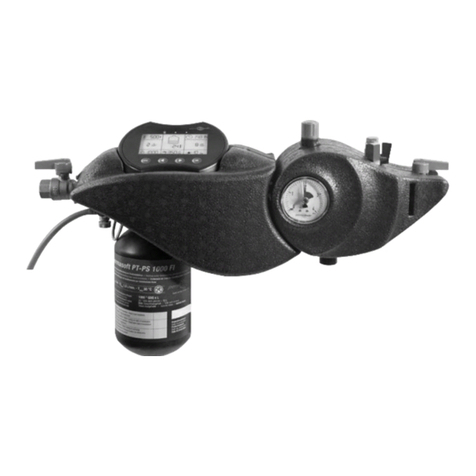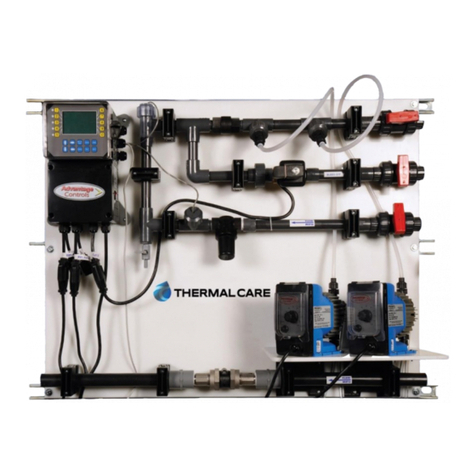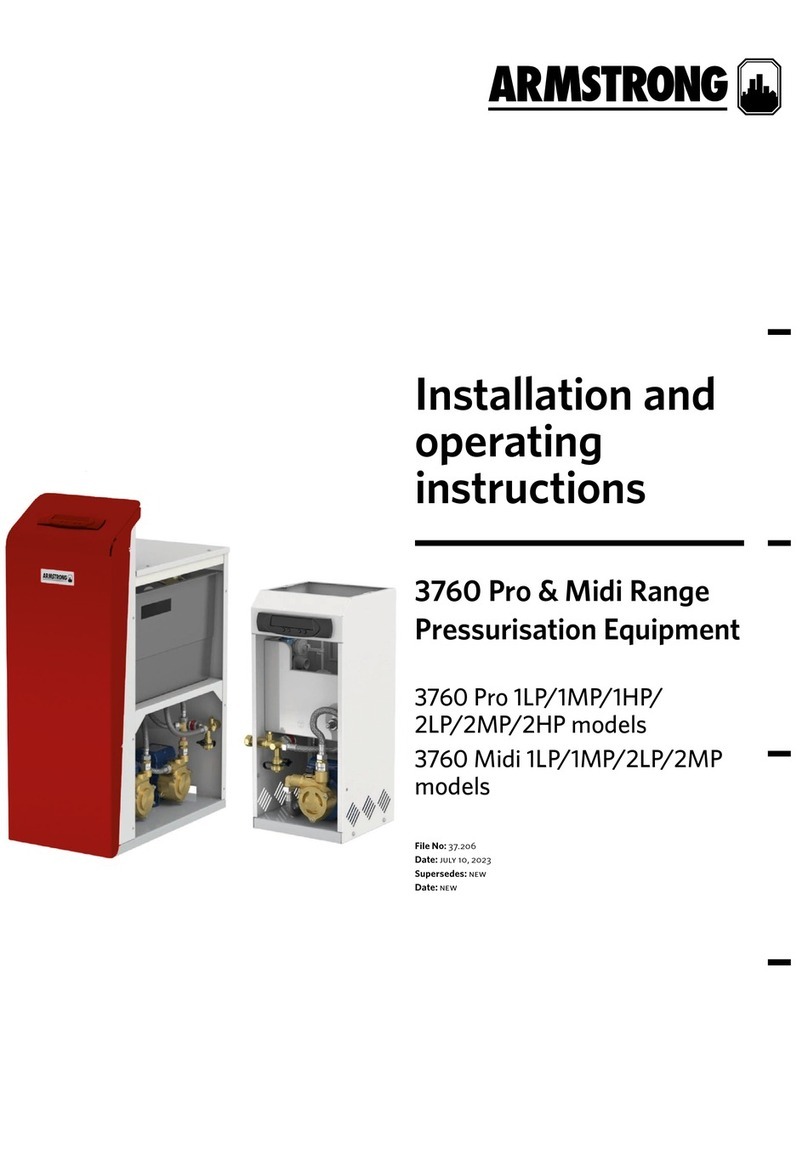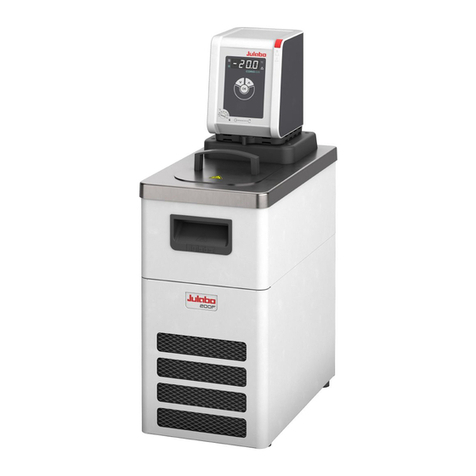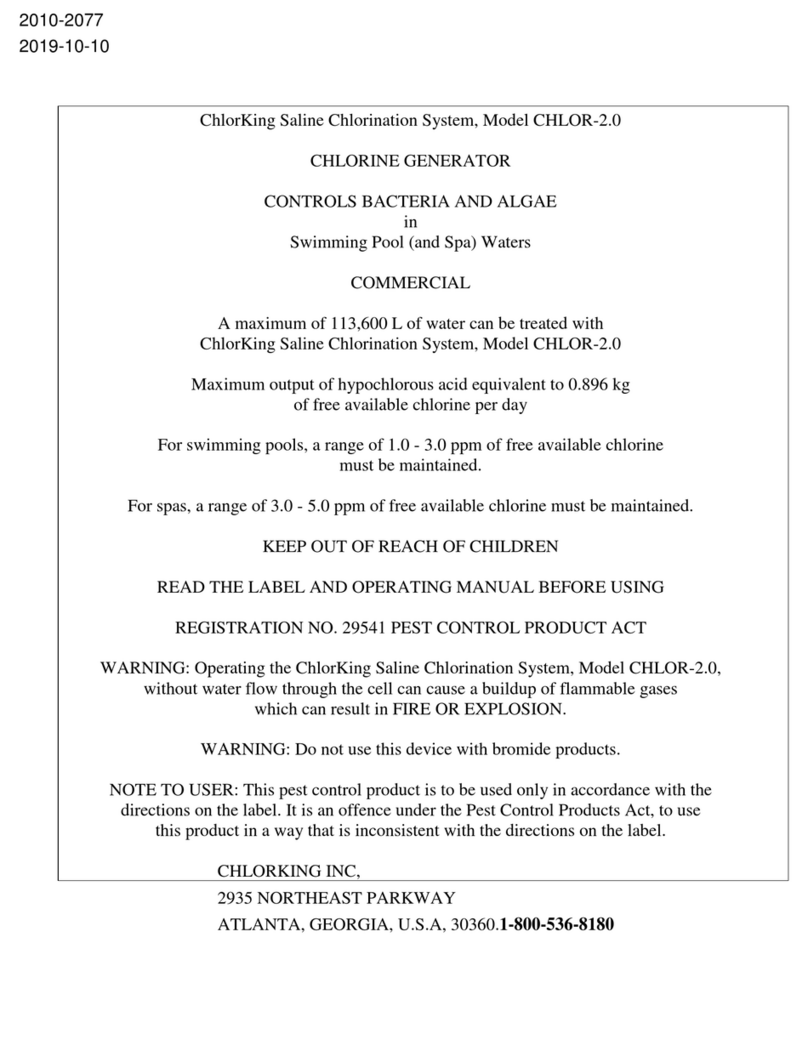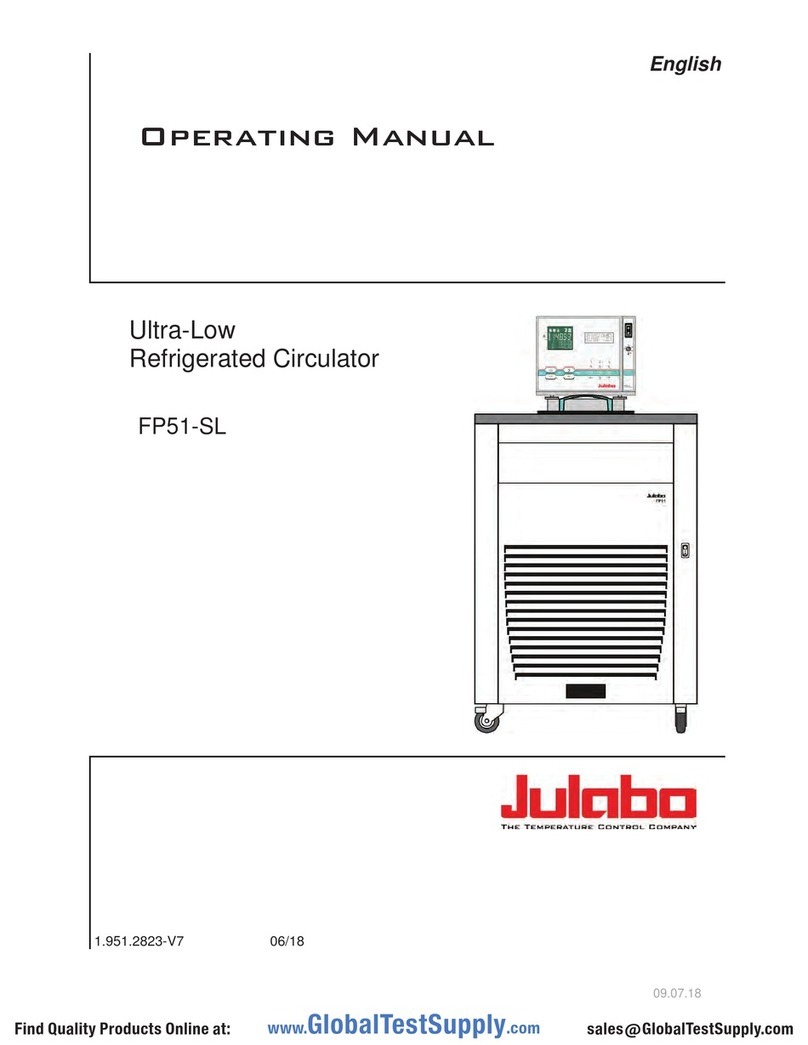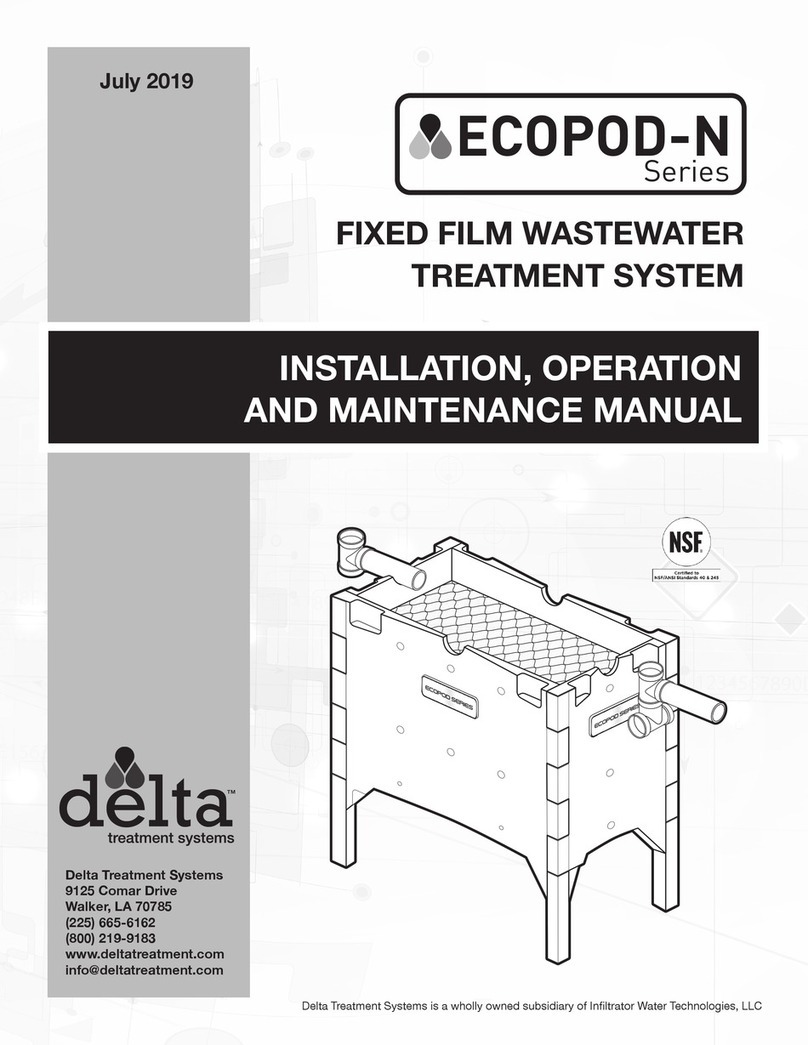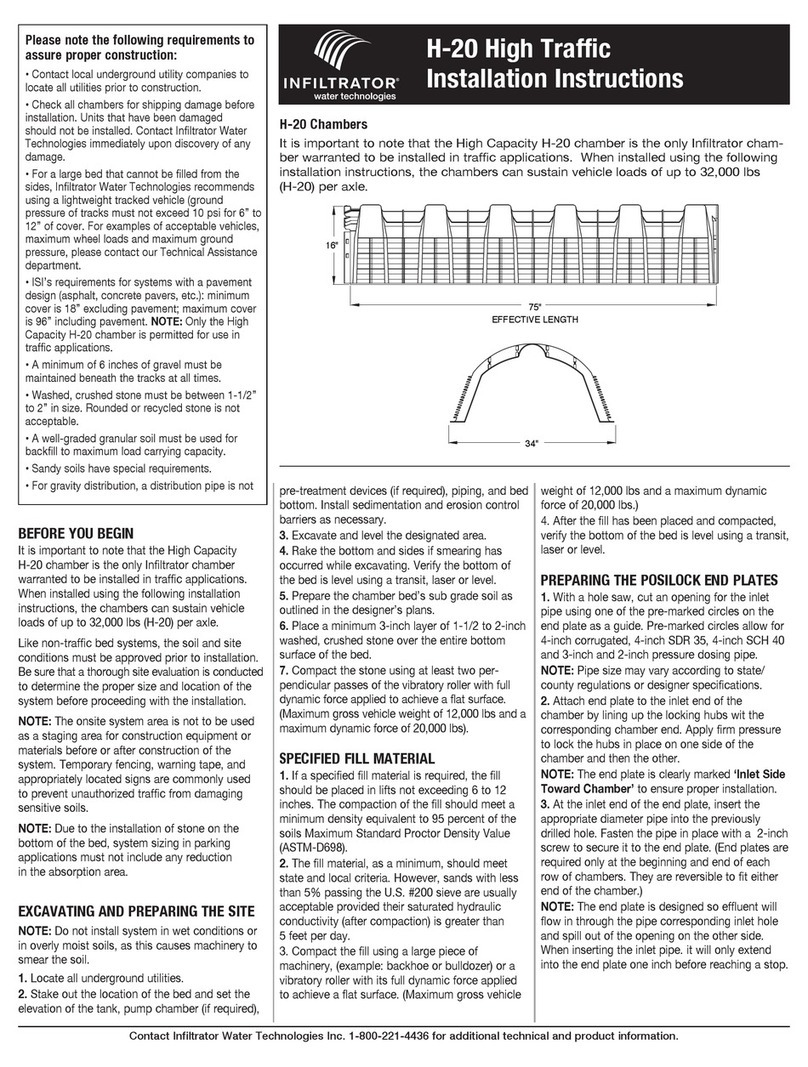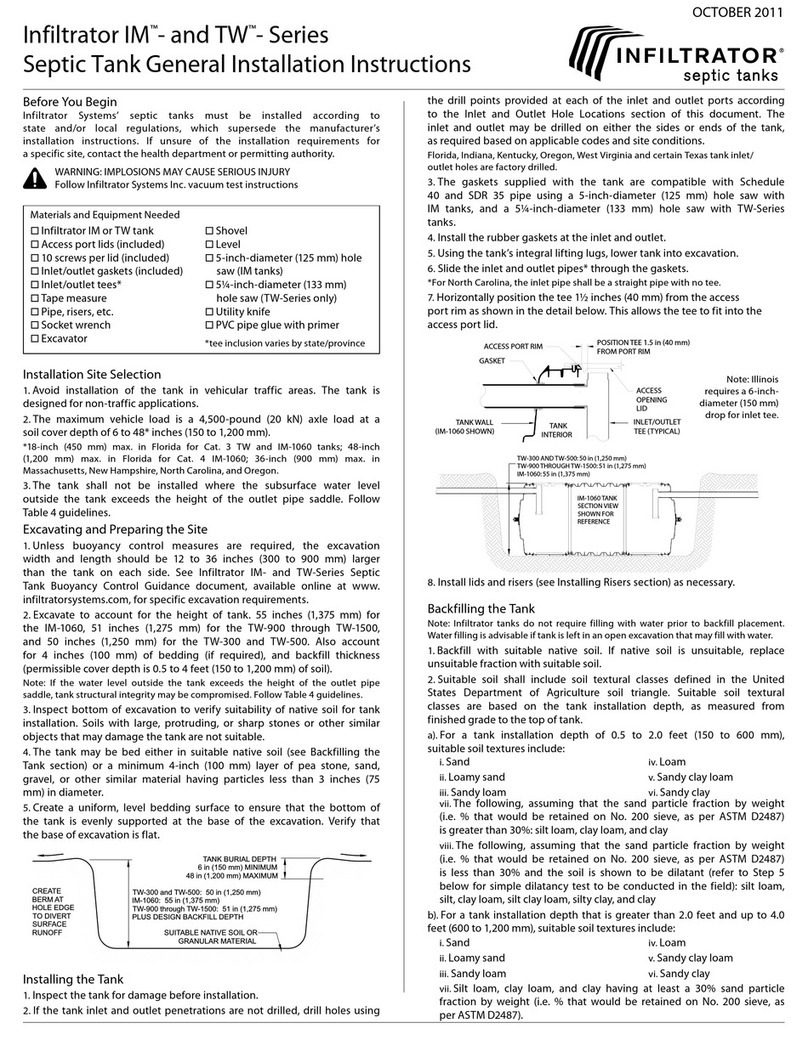3.0 INSTALLATION
© Presby Environmental, Inc., Design & Installation Manual, September 2020 Edition 19
3.1 Installation Requirements
Component Handling
•Keep mud, grease, oil, etc. away from all components. Avoid dragging pipe through wet or muddy areas.
Store pipe on high and dry areas to prevent surface water and soil from entering the pipes or
contaminating the fabric prior to installation.
•The outer fabric of the AES pipe is ultra-violet stabilized; however, this protection breaks down after a
period of time in direct sunlight. To prevent damage to the fabric, cover the pipe with an opaque tarp if
stored outdoors.
Site Preparation Prior to Excavation
1. Locate and stake out the system sand bed, extension areas and soil material cover extensions on the site
according to the approved plan.
2. Install sediment/erosion control barriers prior to beginning excavation to protect the system from surface
water flows during construction.
3. Do not stockpile materials or equipment within the portion of the site receiving system sand.
Critical Reminder to Prevent Soil Compaction
It is critical to keep excavators, backhoes, and other equipment off the excavated or tilled surface of a bed. Before
installing the system sand, excavation equipment should be operated around the bed perimeter; not on the bed
itself. It is especially important to avoid using construction equipment down slope of the system to prevent soil
compaction.
When to Excavate
•Do not work wet or frozen soils. If a fragment of soil from about 9 in below the surface can easily be rolled
into a wire, the soil moisture content is too high for construction.
•Do not excavate the system area immediately after, during or before precipitation.
Tree Stumps
Before tilling, remove all grass, leaves, sticks, brush and other organic matter or debris from the excavated system
site. Removal of all tree stumps and the central root system below grade is recommended (see note below). Use a
backhoe or excavator with a mechanical “thumb” or similar extrication equipment to lift or leverage the stump in a
manner that minimizes soil disturbance. It is not necessary for the soil of the system site to be smooth when the
site is prepared.
•Avoid soil disturbance, relocation, or compaction.
•Avoid mechanical leveling or tamping of dislodged soil.
Fill all voids created by stump or root removal with system sand.
NOTE: If removal of a tree stump will result in disturbance of the suitable or provisionally suitable soils which
comprise part of the minimum vertical separation distance, then the stump should not be removed. Disturbance
of the materials which comprise the minimum vertical separation will render the site unacceptable.
Raking and Tilling Procedures
All areas receiving system sand, sand fill, side-slope tapering and fill extensions shall be raked or tilled to remove
the organic layer (grass, leaves, forest litter, etc.). If a backhoe/excavator is used to till the site, fit it with chisel
teeth and till the site. The backhoe/excavator shall remain outside of the proposed system sand area and all areas
that will be impacted by side-slope tapering. While tilling, remove all stones larger than 6 in, stumps roots, grass,
brush and other organic matter or debris from the excavated system site.
•For in-ground bed systems, excavate the system bed as necessary below original grade. Using an
excavator or backhoe, tilt the bucket teeth perpendicular to the bed and use the teeth to rake furrows
2 in –6 in deep into the bottom of the entire area receiving system sand or sand fill.
•For elevated bed systems, remove all organics and topsoil (O & A soil horizons) in the footprint of the
dispersal area prior to installing system sand; for percolation rates of 61 –120 MPI, remove the organics,






















